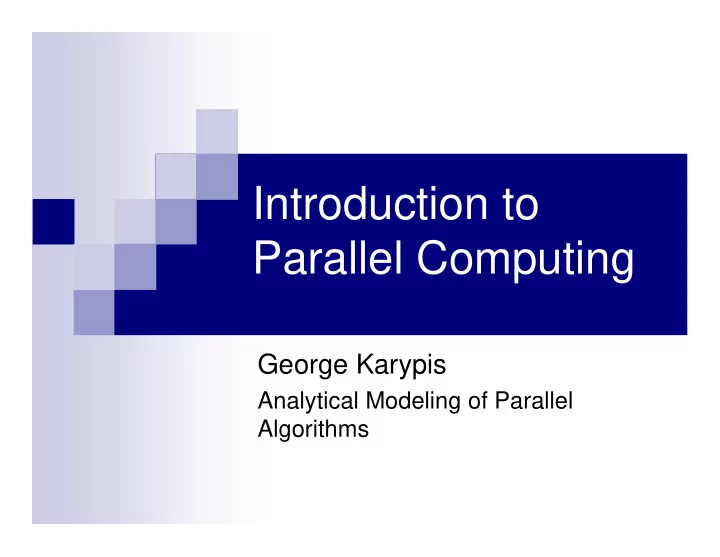

Introduction to Parallel Computing George Karypis Analytical Modeling of Parallel Algorithms
Sources of Overhead in Parallel Programs � The total time spent by a parallel system is usually higher than that spent by a serial system to solve the same problem. � Overheads! � Interprocessor Communication & Interactions � Idling � Load imbalance, Synchronization, Serial components � Excess Computation � Sub-optimal serial algorithm � More aggregate computations � Goal is to minimize these overheads!
Performance Metrics Parallel Execution Time � � Time spent to solve a problem on p processors. T p � Total Overhead Function � � T o = pT p - T s � Speedup � S = T s /T p � Can we have superlinear speedup? exploratory computations, hardware � features Efficiency � � E = S/p Cost � � p T p (processor-time product) � Cost-optimal formulation Working example: Adding n elements on � n processors.
Effect of Granularity on Performance � Scaling down the number of processors � Achieving cost optimality � Naïve emulations vs Intelligent scaling down � adding n elements on p processors
Scaling Down by Emulation
Intelligent Scaling Down
Scalability of a Parallel System � The need to predict the performance of a parallel algorithm as p increases � Characteristics of the T o function � Linear on the number of processors � serial components � Dependence on T s � usually sub-linear � Efficiency drops as we increase the number of processors and keep the size of the problem fixed � Efficiency increases as we increase the size of the problem and keep the number of processors fixed
Scalable Formulations � A parallel formulation is called scalable if we can maintain the efficiency constant when increasing p by increasing the size of the problem � Scalability and cost-optimality are related � Which system is more scalable?
Measuring Scalability � What is the problem size? � Isoefficiency function � measures the rate by which the problem size has to increase in relation to p � Algorithms that require the problem size to grow at a lower rate are more scalable � Isoefficiency and cost-optimality � What is the best we can do in terms of isoefficiency?
Recommend
More recommend